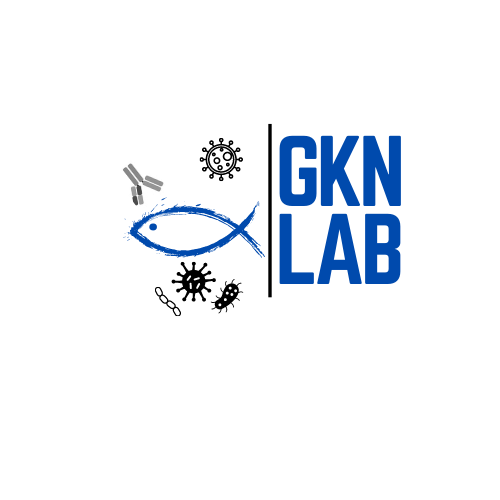Foodborne diseases, often caused by foodborne pathogens, present a significant global public health threat, affecting both developed and developing nations. In the pursuit of swift and cost-effective solutions for pathogen detection, antibody-based lateral flow assays (LFAs) have emerged as a promising tool, particularly in resource-scarce regions where access to centralized laboratories can be challenging during outbreaks or surveillance efforts. LFAs are not only rapid and cost-efficient but also user-friendly, utilizing easily obtainable samples like whole blood from a simple finger stick.
According to the Qatar Statistics Authority, Qatar is currently experiencing a massive influx of foreign labor, with expatriates constituting over 95% of its 2 million-strong workforce. Many of these workers originate from regions highly susceptible to foodborne viruses, including Asia (India, Pakistan, Nepal, and Bangladesh) and Africa (Sudan and Egypt). The COVID-19 pandemic has underscored the value of rapid point-of-care antigen tests in managing individual infections and controlling outbreaks. However, despite the availability of point-of-care diagnostic assays for various diseases, the situation for foodborne viruses remains challenging. This presents a pressing need for ultrasensitive point-of-care diagnostic assays, particularly in Qatar, given its large expatriate population and the hosting of major sporting events.
Nadin Younes, a PhD candidate in the College of Health Sciences at Qatar University, is engaged in an innovative research project under the guidance of Dr. Gheyath K. Nasrallah, Associate Professor in the College of Health Sciences, and with co-supervision by Dr. Hadi M. Yassine, Associate Professor of Infectious Diseases. The primary objective of their research is the development of two cutting-edge LFAs designed for the detection of Noroviruses (NoVs) and Hepatitis E Virus (HEV). These LFAs will offer user-friendly operation, exceptional sensitivity, and significantly enhanced cost-effectiveness compared to conventional colorimetric LFAs and other commercially available assays with limited sensitivity.
NoV is the leading cause of acute gastroenteritis, accounting for an estimated 685 million cases each year. Approximately 200 million cases occur among children under 5 years old, resulting in an estimated 50,000 child deaths annually. Frequent outbreaks commonly occur in close-contact settings such as cruise ships, military settings, hospitals, nursing homes, and schools. NoVs have a very low infectious dose, a short incubation period, strong resistance to typical disinfection products, and multiple modes of transmission, making early point-of-care diagnosis vital for preventing disease transmission. Traditional diagnostic methods, such as electron microscopy, reverse transcription-polymerase chain reaction (RT-PCR), and enzyme-linked immunosorbent assay (ELISA), require complicated and expensive instrumentation and are considered too laborious and slow to be useful during severe outbreaks. In the midst of an outbreak, there is a need to quickly identify the cause of the symptoms to implement effective containment measures and limit the outbreak duration, especially critical in closed environments such as cruise ships, nurseries, schools, or military settings.
HEV is the most common cause of acute liver inflammation worldwide. According to the World Health Organization (WHO), there are an estimated 20 million HEV infections worldwide annually, leading to an estimated 3.3 million symptomatic cases of HEV. Most importantly, WHO estimates that Hepatitis E causes approximately 70,000 deaths (accounting for 3.3% of viral hepatitis-related mortality). HEV is responsible for severe hepatitis in pregnant patients and newborns and has been linked to up to 30% of third-trimester maternal deaths. Several serological methods are available for diagnosing Hepatitis E, including microplate enzyme immunoassays (EIA) and immunochromatographic assays. However, serology is complicated because HEV-IgM may not reach detectable levels in the early stage of infection (the “window period”), and HEV-IgM can be detectable during convalescence (3-6 months post-infection). Due to the unreliability of current serological tests in detecting HEV infection, the WHO recommends initially testing for the presence of IgM anti-HEV antibodies. If the test is positive, it indicates either active or recent infection, and a molecular test to detect HEV RNA can be performed. Nonetheless, this standard protocol is time-consuming, expensive, and not very effective when accurate and fast diagnosis is needed. Accurate and timely diagnosis of HEV infection is essential, especially in asymptomatic blood donors and organ donors, as well as a substantial population of pregnant women who could face significant health consequences due to the delayed diagnosis of HEV infection.
Dr. Gheyath’s team employs fluorescent reporter particles for the development of the ultrasensitive LFAs. These fluorescent particles represent an innovative improvement in the field of biosensing technologies. This approach enhances sensitivity, enabling the detection of minute virus concentrations, even in low-concentration scenarios. The team anticipates that by utilizing these tests, the detection of viruses can be verified with greater accuracy, even in the early stages of infection, facilitating immediate preventive and therapeutic measures. This approach contributes to strengthening the capacity of healthcare institutions to respond to outbreaks and to limit the spread of diseases, especially in high-population-density environments or where medical resources are limited.
The Impact and Potential
The LFAs developed by Dr. Nasrallah’s team will have broader applications beyond clinical settings. They can be adapted for testing food samples and environmental specimens, including treated wastewater, thereby enhancing food safety and public health management. The commercial potential of this technology benefits not only Qatar but also has global relevance, especially in addressing emerging threats such as Coronaviruses like MERS.
Celebrating Excellence: Awards and Recognition
Nadin Younes’s exceptional dedication and research excellence were honored with the 10th L’Oréal-UNESCO for Women in Science Middle East Regional Young Talent Award. This distinguished award aims to promote the participation of young women in science from GCC Countries. Additionally, her project secured the first-place position in the 10th Innovation and Entrepreneurship Contest at Qatar University.
Acknowledgments
This project was made possible by the generous support of GSRA8-L-1-0501-21022 and NPRP13S-0128-200185 from the Qatar National Research Fund, a member of the Qatar Foundation. We would also like to acknowledge the dedicated efforts of our collaborators at the University of Houston, namely, Dr. Richard Wilson, Dr. Katerina Kourentzi, and Dmitri Litvinov.

